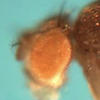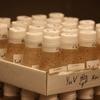Drosophila (fly)
. 9/23/2016. “Drosophila research resources at the DRSC and TRiP.” Presentation to the Boston Area Drosophila Meeting (Sept. 2016).
. 9/13/2016. “An Integrative Analysis of the InR/PI3K/Akt Network Identifies the Dynamic Response to Insulin Signaling.” Cell Reports, 16, 11, Pp. 3062-3074.Abstract
Is it a hit? On mining our data sets.
Publication describes TRiP resources
DRSC & TRiP at TAGC 2016
. 2010. “Conserved microRNA targeting in Drosophila is as widespread in coding regions as in 3'UTRs.” Proc Natl Acad Sci U S A, 107, 36, Pp. 15751-6.Abstract
Beta-testing a "Drosophila Protocols Portal"
. 2014. “Cas9-based genome editing in Drosophila.” Methods Enzymol, 546, Pp. 415-39.Abstract
. 2016. “CRISPR guide RNA design for research applications.” FEBS J.Abstract
. 2012. “FlyRNAi.org--the database of the Drosophila RNAi screening center: 2012 update.” Nucleic Acids Res, 40, Database issue, Pp. D715-9.Abstract
. 2010. “Dynamic switch of negative feedback regulation in Drosophila Akt-TOR signaling.” PLoS Genet, 6, 6, Pp. e1000990.Abstract
. 2012. “A genome-wide RNAi screen identifies regulators of cholesterol-modified hedgehog secretion in Drosophila.” PLoS One, 7, 3, Pp. e33665.Abstract




